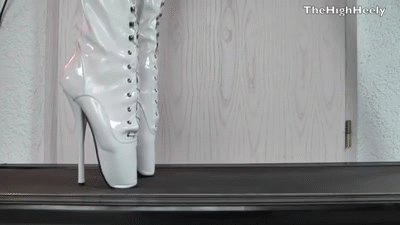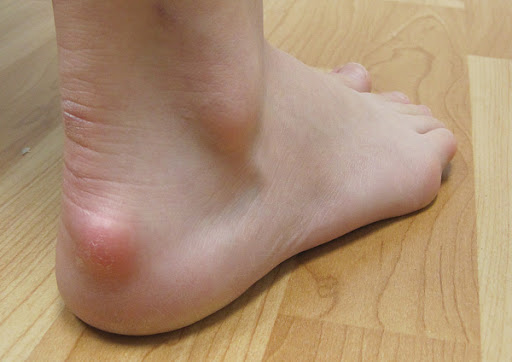What is it?
Haglund’s Deformity is a bony enlargement of the back of the heel bone. Sometimes it’s called
“pump bump” because the deformity often occurs in women who wears pumps and runners.
 So, Quasimodo likely had this. If there was a deformity, he had it.
So, Quasimodo likely had this. If there was a deformity, he had it.
Causes
The shape of your foot can contribute to the development of Haglund’s Deformity. So, if you have
high arches, a tight Achilles tendon, or a tendency to walk on the outside of your feet, you’re
more likely to develop Haglund’s Deformity than other people. But, wearing shoes with a firm,
rigid back may also contribute to the development of Haglund’s Deformity.
Symptoms
Next, the primary symptoms of Haglund’s Deformity are an enlarged bony prominence on the back
of the heel and heel pain. You might also develop blisters on your heels as a result of your shoes
rubbing against the bump.
Home Care
Heel pads placed in the backs of your shoes may relieve and redistribute some of the pressure.
Applying ice to the area after removing your shoes may ease some of the pain and discomfort.
Also, switching shoes can help too. If you have an otherwise normal foot, wearing open-heeled
shoes may provide relief. However open-heeled shoes may not be not a good idea if you have
tendinitis, bunions, foot pain, or a structural deformity of the foot.
Diagnosis and Treatment
A podiatrist will begin by carefully examining your feet and taking a thorough medical history. And
X-rays may be ordered to get a good look at the structure of your feet. Sometimes, an MRI or
ultrasound might be ordered as well.
Treatment will depend on the severity of the condition. And options include:
● Shoe modification. Your podiatrist can recommend over-the-counter heel pads, heel
lifts, or arch supports, or create custom orthotic supports to change the position of
your feet in your shoes to relieve pressure on the back of your foot.
● Medication. Topical anti-inflammatory medication, applied directly to the heel, may
provide pain relief. Oral anti-inflammatory medication (such as ibuprofen) can help as
well.
● Immobilization. If the area is extremely inflamed, use a custom made soft cast or walking boot to immobilize the area and allow it to heal.
● Physical Therapy
● Surgery. If none of the non-surgical methods provide adequate relief, your podiatrist
may recommend surgery to correct the deformity. Podiatrists are specially-trained foot
and ankle surgeons who can surgically re-shape the heel bone.
Prevention
 (Step one, don’t wear these shoes)
(Step one, don’t wear these shoes)
Avoid shoes with rigid backs. And if you have a high arch or tight Achilles tendon, wearing
appropriate shoe inserts and/or adequately stretching the Achilles tendon can help prevent the
development of Haglund’s Deformity.However, if you do find yourself struggling with this issue, don’t hesitate to come see us at our office and we can get you taken care of.
Written by Travis Rohner PT

